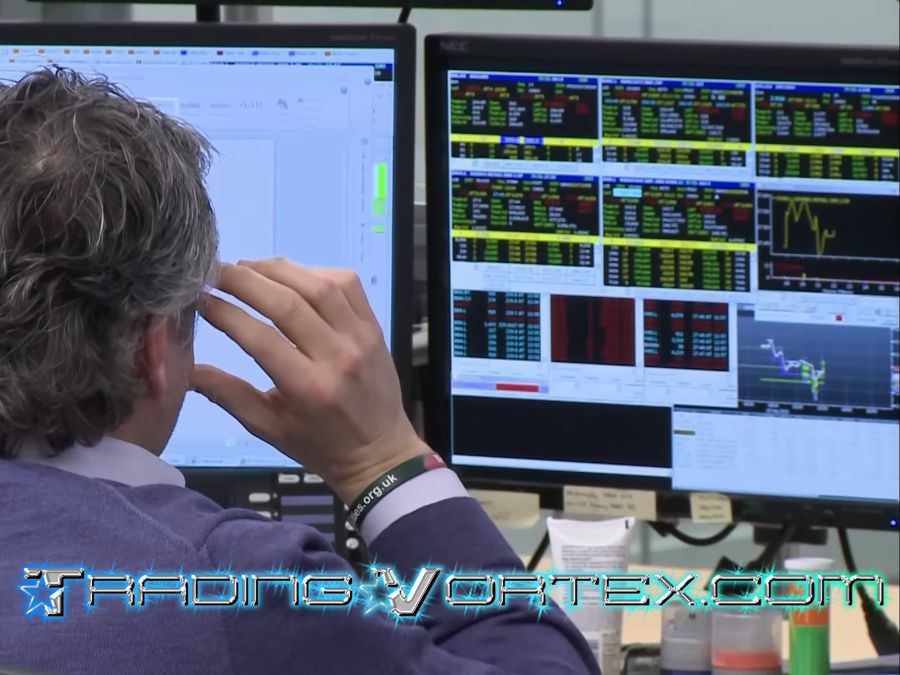Table Of Contents:
- What Is Leverage in Forex Trading?
Leverage Ratios Explained:
The Mechanics of Leverage:
Pros and Cons of Using Leverage:
Leverage and Risk Management Strategies:
Real-Life Examples Illustrating Leverage in Action:
Regulations and Leverage Limits:
Choosing the Right Leverage Level:
Common Misconceptions about Leverage:
Conclusion:
What Is Leverage in Forex Trading?
Definition and Concept of Leverage:
At its core, leverage works by borrowing funds from the broker to open larger positions. The trader's own capital serves as collateral, and the broker provides the remaining capital required to execute the trade. This borrowed capital allows traders to amplify their potential profits if the trade moves in their favor. However, it's crucial to understand that leverage also magnifies potential losses in the same way, making it a double-edged sword in forex trading.
How Leverage Amplifies Trading Power?
To illustrate how leverage works, let's consider an example:
- Suppose a trader has $1,000 in their trading account and decides to use a leverage ratio of 100:1. With this level of leverage, the trader can control a position size of $100,000 ($1,000 * 100). Without leverage, the trader would only be able to control a $1,000 position with their available capital.
Now, if the currency pair they are trading moves in their favor by 1%, the profit on a $100,000 position would be $1,000 ($100,000 * 1%). In this scenario, the trader effectively doubled their initial capital with just a 1% price movement, thanks to leverage.
However, it's essential to highlight the inherent risks of leverage. If the currency pair moves against the trader by 1%, they would also incur a $1,000 loss, wiping out their entire initial capital.
This example underscores the importance of responsible risk management when utilizing leverage in forex trading. While it can amplify profits, it equally magnifies potential losses, making it crucial for traders to use leverage judiciously and implement risk mitigation strategies to protect their investments.
Leverage Ratios Explained:
Different Leverage Levels (e.g., 50:1, 100:1, 500:1):
Different brokers offer varying levels of leverage, and it's essential for traders to understand how these ratios impact their trading capabilities:
- Lower leverage ratios, such as 50:1, provide a more conservative approach to trading. Traders can control smaller positions relative to their capital, which can be less risky but may limit potential profits.
- On the other hand, higher leverage ratios, such as 500:1, offer the potential for traders to control significantly larger positions compared to their initial investment. While this can amplify potential profits, it also escalates the level of risk involved in trading.
- The trader's margin requirements are lower with higher leverage, allowing them to allocate capital to other trades. However, it's crucial to note that a single adverse price movement can result in substantial losses when high leverage is employed.
Impact on Trading Capital and Risk:
The choice of leverage ratio has a profound impact on a trader's trading capital and risk exposure.
- Higher leverage levels allow traders to allocate their capital more efficiently, potentially opening multiple positions simultaneously. This can diversify their trading portfolio, but it also increases the exposure to market fluctuations.
- Conversely, lower leverage ratios provide a more conservative approach, preserving capital but potentially limiting trading opportunities. The risk per trade is reduced with lower leverage, making it easier for traders to implement risk management strategies like setting stop-loss orders.
It's important for traders to align their choice of leverage ratio with their risk tolerance, trading strategy, and financial goals. While high leverage can magnify profits, it can also lead to substantial losses if not used judiciously. Responsible risk management practices, including position sizing, stop-loss orders, and proper analysis, are essential regardless of the chosen leverage level. Understanding the implications of different leverage ratios is a key step in mastering the art of forex trading.
The Mechanics of Leverage:
How Leverage is Provided by Brokers?
Understanding how leverage is provided by forex brokers is crucial to grasp the mechanics behind this powerful tool. Forex brokers act as intermediaries between traders and the interbank forex market. They offer traders access to leverage by essentially lending them additional funds to amplify their trading positions.
When a trader opens a leveraged position, the broker provides the necessary capital required to execute the trade beyond the trader's initial deposit. This borrowed capital allows traders to control larger positions than they could with their own funds alone. In return for providing this leverage, brokers charge interest or fees, often referred to as "swap" or "rollover" rates, which can affect the overall cost of maintaining a leveraged position overnight.
Brokers typically offer a range of leverage ratios, as mentioned earlier, to cater to the varying risk appetites and preferences of traders. It's essential for traders to choose a reputable broker that provides transparent and fair leverage terms, as broker quality can significantly impact the trading experience.
Margin Requirements and Equity Management:
One of the key aspects of leverage is margin, which is the trader's initial deposit required to open and maintain a leveraged position. Margin acts as collateral for the borrowed funds provided by the broker. Margin requirements are determined by the chosen leverage ratio, and they dictate the minimum amount of capital a trader must have in their account to support a specific position size.
Effective equity management is critical when trading with leverage. Traders must monitor their account balance continuously to ensure it remains above the required margin level. If losses on a leveraged position deplete the account balance to a point where it can no longer meet the margin requirements, a margin call may be triggered. A margin call requires the trader to deposit additional funds to cover the shortfall or close out positions to mitigate further losses.
In summary, the mechanics of leverage in forex trading involve brokers providing additional capital to traders, with margin requirements ensuring traders have adequate collateral. Effective equity management and awareness of margin levels are essential to avoid margin calls and navigate leveraged positions responsibly. Understanding these mechanics empowers traders to harness the potential benefits of leverage while mitigating associated risks.
Pros and Cons of Using Leverage:
Advantages of Leverage in Forex Trading:
Leverage in forex trading offers several advantages that make it an appealing tool for traders:
- Amplified Profit Potential: The primary advantage of leverage is the ability to magnify profits. With a smaller initial capital outlay, traders can control larger positions. This means that even small price movements can result in significant gains when leverage is employed effectively.
- Diversification: Leverage allows traders to spread their capital across multiple currency pairs or trading opportunities. This diversification can help reduce risk by not putting all capital at stake in a single trade.
- Capital Efficiency: Leverage enables traders to make the most of their available capital. By controlling larger positions, they can potentially maximize returns on their investment.
- Access to Markets: Leverage also provides access to the forex market for traders with limited capital. Without leverage, some traders may find it challenging to participate in the forex market, which typically requires substantial capital to trade larger positions.
Risks and Drawbacks of High Leverage:
While leverage offers numerous advantages, it comes with inherent risks, particularly when used recklessly:
- Magnified Losses: Just as leverage can amplify profits, it can equally magnify losses. A small adverse price movement can result in significant losses, especially with high leverage ratios. Traders can find themselves in a vulnerable position if they do not manage their risk effectively.
- Margin Calls: High leverage can increase the likelihood of margin calls, where traders are required to deposit additional funds to meet margin requirements. Failure to do so can result in forced position closures, locking in losses.
- Psychological Stress: Trading with high leverage can be emotionally challenging. The pressure to make quick decisions and the potential for substantial gains or losses can lead to increased stress and emotional trading, which can be detrimental to overall performance.
- Overtrading: The allure of high leverage can tempt traders to overtrade, opening too many positions or using excessive leverage on a single trade. Overtrading can deplete capital rapidly and lead to poor decision-making.
- Regulatory Constraints: In some regions, regulators have imposed restrictions on leverage levels offered by brokers to protect traders from excessive risk. This can limit the options available to traders who prefer high leverage.
In conclusion, while leverage in forex trading can be a powerful tool for profit generation, it should be approached with caution and a sound risk management strategy. Traders must weigh the advantages of amplified profits against the risks of magnified losses, ensuring they strike a balance that aligns with their trading goals and risk tolerance. Responsible use of leverage is paramount to long-term success in the forex market.
Leverage and Risk Management Strategies:
Setting Stop Losses and Take Profits:
One of the most effective ways to manage risk when using leverage in forex trading is by implementing stop-loss and take-profit orders. These orders act as safety nets, defining predetermined price levels at which a trade will automatically close.
- Stop Losses: A stop-loss order specifies the price at which a trader is willing to accept a loss and exit the trade. By setting a stop loss, traders limit potential losses on a trade and ensure that a losing position doesn't deplete their account beyond an acceptable level. The stop-loss order is a crucial tool in preventing large, unexpected losses when leverage is involved.
- Take Profits: Conversely, a take-profit order sets a target price at which the trader intends to exit the trade with a profit. It locks in gains when the price reaches the desired level. Take-profit orders help traders secure profits before the market reverses and eliminates the temptation to hold on to a winning trade for too long, potentially erasing gains.
Position Sizing and Risk-Reward Ratios:
Another vital aspect of managing risk when using leverage is determining the appropriate position size and assessing the risk-reward ratio of each trade.
- Position Sizing: Position sizing involves determining the number of lots or units to trade based on the trader's risk tolerance and the size of their trading account. With leverage, it's crucial to calculate the position size correctly to ensure that potential losses remain within acceptable limits. Many traders use a fixed percentage of their trading capital for each trade, such as 1% or 2%, to maintain consistency in position sizing.
- Risk-Reward Ratios: The risk-reward ratio is a measure of the potential reward compared to the potential risk on a trade. Traders should aim for a favorable risk-reward ratio, typically aiming for a reward that is at least equal to or greater than the risk. "For example, a common risk-reward ratio might be 1:2, where a trader is willing to risk $100 to potentially make $200". This ratio helps traders assess whether a trade is worth taking and whether it aligns with their overall trading strategy.
By combining stop-loss and take-profit orders with proper position sizing and favorable risk-reward ratios, traders can effectively manage risk when utilizing leverage in forex trading. These risk management strategies help ensure that losses are controlled, profits are protected, and the overall risk exposure is maintained at a level consistent with the trader's financial goals and risk tolerance.
Real-Life Examples Illustrating Leverage in Action:
To gain a deeper understanding of how leverage functions in the real world of forex trading, let's explore a couple of case studies that highlight both the potential gains and the risks associated with leverage.
Case Study 1: Leveraged Profits.
Imagine a trader with $5,000 in their forex trading account who decides to utilize a leverage ratio of 50:1. With this leverage, the trader can control positions worth up to $250,000. They decide to go long on the EUR/USD currency pair, anticipating an upward price movement.
In this scenario, the trader opens a position of $100,000 (100,000 EUR) with a 50:1 leverage, using only $2,000 of their own capital as margin. If the EUR/USD exchange rate rises by 1%, the trader stands to gain $1,000 ($100,000 * 1%). This represents a 50% return on their initial $2,000 investment, demonstrating the power of leverage to amplify profits.
Case Study 2: Leverage and Potential Losses.
Now, let's consider the flip side. The same trader decides to use a 100:1 leverage ratio for a different trade, this time shorting the GBP/USD currency pair, anticipating a price decline.
With a leverage ratio of 100:1, the trader can control a position size of $500,000 while committing only $5,000 of their capital as margin. Unfortunately, the market moves against their position, and the GBP/USD exchange rate increases by 1%. In this scenario, the trader would incur a loss of $5,000 ($500,000 * 1%), effectively wiping out their entire trading account.
These case studies emphasize the dual nature of leverage in forex trading. While it can significantly magnify profits with relatively small capital investments, it carries the risk of substantial losses if market movements are unfavorable. These examples underscore the importance of responsible risk management, including setting stop-loss orders, proper position sizing, and choosing leverage levels that align with one's risk tolerance and trading strategy.
It's crucial for traders to approach leverage with caution, fully understanding its implications and using it judiciously to strike a balance between profit potential and risk mitigation in the dynamic world of forex trading.
Regulations and Leverage Limits:
How Regulatory Authorities Control Leverage?
Regulatory authorities play a significant role in controlling leverage in the forex market to safeguard the interests of traders and maintain the integrity of the financial system. These regulations vary from one country to another and are designed to address the risks associated with high levels of leverage.
- Leverage Limits: Many regulatory bodies impose specific leverage limits that forex brokers are allowed to offer to retail traders. These limits vary but are often set at levels such as 50:1, 30:1, or 20:1. This means that traders in regions with strict regulations may have access to lower leverage levels, reducing their potential risk exposure.
- Risk Disclosures: Regulators often require brokers to provide comprehensive risk disclosures to their clients. These disclosures highlight the risks associated with leverage and emphasize the importance of responsible trading practices. Traders are encouraged to read and understand these disclosures before engaging in leveraged trading.
- Suitability Assessments: Some regulatory authorities require brokers to assess the suitability of leverage for individual clients. This assessment considers factors such as a trader's experience, financial situation, and risk tolerance. Brokers may restrict or provide lower leverage to clients deemed unsuitable for high-leverage trading.
- Client Fund Protection: Regulatory authorities often mandate strict rules for the protection of client funds. Brokers must segregate client funds from their operational funds and maintain adequate capital reserves to cover potential losses. This protects traders in the event of broker insolvency.
Impact of Regulations on Traders:
Regulations on leverage have both positive and negative implications for traders:
- Risk Mitigation: Strict leverage limits imposed by regulators can help mitigate the risks associated with leveraged trading. Traders in regions with lower leverage limits are less exposed to the potential for significant losses due to excessive leverage.
- Consumer Protection: Regulatory oversight ensures that brokers adhere to ethical and transparent practices. This enhances consumer protection by reducing the likelihood of fraudulent activities and unethical behavior within the forex industry.
- Limited Trading Flexibility: On the downside, lower leverage limits can limit trading flexibility for experienced traders who understand and can manage the risks associated with high leverage. It may force traders to allocate more capital to achieve the same trading objectives.
- Broker Selection: Traders need to carefully select brokers that are regulated and compliant with the specific rules of their region. Regulatory compliance is a crucial factor in choosing a reliable and trustworthy forex broker.
In summary, regulations and leverage limits in the forex market are intended to strike a balance between protecting traders and allowing them to access the market. While regulations can reduce the potential for excessive risk, they may also impact a trader's ability to use high leverage for potential profit generation. Traders should be aware of the regulatory environment in their region and select brokers and leverage levels that align with their risk tolerance and trading goals.
Choosing the Right Leverage Level:
Factors to Consider When Selecting Leverage:
Selecting the appropriate leverage level in forex trading is a critical decision that can significantly impact your trading experience and risk exposure. To make an informed choice, consider the following factors:
- Risk Tolerance: Assess your risk tolerance carefully. If you are risk-averse and prefer to protect your capital, lower leverage ratios (e.g., 10:1 to 30:1) may be more suitable. On the other hand, if you are comfortable with higher risk and can manage it effectively, you might consider higher leverage (e.g., 50:1 or 100:1).
- Trading Experience: Your level of experience in forex trading is essential. Novice traders are generally advised to start with lower leverage to avoid the potential for large losses. As you gain experience and develop effective risk management strategies, you can gradually increase your leverage.
- Trading Strategy: Different trading strategies may require varying levels of leverage. "For example, scalpers who make quick, small trades throughout the day might prefer higher leverage for the potential to amplify their profits. In contrast, swing or position traders may opt for lower leverage to withstand market volatility over longer timeframes".
- Asset Volatility: The volatility of the currency pairs you trade should influence your leverage choice. Highly volatile pairs may require more significant margin buffers to withstand price fluctuations, leading to lower leverage ratios.
- Capital Size: The size of your trading account matters. With a larger capital base, you may have more flexibility to choose lower leverage since you can still control substantial positions without high leverage ratios.
Tailoring Leverage to Your Trading Strategy:
Your trading strategy should dictate your choice of leverage:
- Scalping and Day Trading: Traders who engage in short-term trading, such as scalping and day trading, may opt for higher leverage to capture small price movements more effectively. However, they must be prepared for rapid market changes and implement tight risk management.
- Swing Trading: Swing traders typically hold positions for days or weeks and may find lower leverage ratios sufficient to weather price fluctuations over longer periods. This approach aligns with a more conservative risk management strategy.
- Position Trading: Position traders, who hold positions for months or even years, usually prefer the lowest leverage levels. Their focus is on fundamental analysis and long-term trends, so they need less leverage to accommodate market fluctuations.
In conclusion, choosing the right leverage level in forex trading is a personalized decision that depends on your risk tolerance, experience, trading strategy, and capital size. It's crucial to strike a balance between the potential for profit and the management of risk. Remember that responsible use of leverage is key to long-term success in the forex market, regardless of the leverage level you choose.
Common Misconceptions about Leverage:
Misconceptions and myths about leverage in forex trading can lead to costly mistakes. Let's debunk some of the most common misunderstandings and set the record straight:
- "Leverage Guarantees Profits": One of the most dangerous misconceptions is the belief that leverage guarantees profits. In reality, leverage can amplify both gains and losses. There are no guarantees in trading, and using leverage irresponsibly can result in substantial losses.
- "More Leverage Means More Profit": It's a common belief that using the highest available leverage will lead to the most significant profits. While higher leverage can amplify profits, it also escalates risk. The appropriate leverage level depends on your trading strategy and risk tolerance.
- "Leverage Is Always Bad": Some traders view leverage as inherently bad and avoid it entirely. While it carries risks, leverage is a tool that, when used responsibly, can enhance trading opportunities and efficiency. It's not inherently good or bad but requires careful management.
- "Leverage Is Only for Experienced Traders": There's a misconception that leverage is only suitable for experienced traders. In reality, traders of all levels can use leverage, but beginners should start with lower ratios and gain experience before considering higher leverage levels.
- "Leverage Doesn't Affect Risk Management": Some traders believe that leverage doesn't impact risk management. In truth, leverage plays a crucial role in determining position size, margin requirements, and potential losses. It's an integral part of effective risk management.
- "You Can't Lose More Than Your Deposit": This is a dangerous misconception. With leverage, it's possible to lose more than your initial deposit, especially if the market moves significantly against your position. That's why setting stop-loss orders is crucial.
- "Leverage Is Always the Same Across Brokers": Leverage levels can vary significantly between brokers and regions due to regulatory differences. Traders should never assume that the leverage offered by one broker is the same as another.
- "Leverage Is a 'Get Rich Quick' Scheme": Some believe that leverage is a shortcut to quick wealth. In reality, successful trading requires knowledge, discipline, and a well-thought-out strategy. Leverage is a tool to aid your strategy, not a substitute for it.
- "Using Less Leverage Is Always Safer": While lower leverage ratios are generally associated with lower risk, they may not always be the safest choice. For some trading strategies, slightly higher leverage can be used responsibly without significantly increasing risk.
Addressing these misconceptions is essential for traders to make informed decisions when using leverage in forex trading. Responsible use of leverage, combined with a solid understanding of its implications, can lead to a more successful and sustainable trading experience.
Conclusion:
In the realm of forex trading, the concept of leverage is akin to a double-edged sword. As we conclude our exploration into "What Is Leverage in Forex Trading and How Does It Work?", it's essential to recap the key points we've covered and reiterate the critical role leverage plays in the success of forex traders.
Recap of Key Points about Leverage:
- Definition: Leverage empowers traders to control positions larger than their initial investment, magnifying both potential profits and losses.
- Mechanics: Forex brokers provide leverage by lending traders additional capital, with margin requirements as collateral.
- Leverage Levels: Leverage ratios, such as 50:1 or 100:1, dictate the extent to which traders can amplify their positions.
- Risk Management: Responsible use of leverage involves setting stop losses, take profits, proper position sizing, and favorable risk-reward ratios.
- Regulations: Regulatory authorities impose leverage limits and requirements to protect traders and maintain market integrity.
- Choosing Leverage: Traders should select leverage levels based on risk tolerance, experience, trading strategy, asset volatility, and capital size.
The Role of Leverage in Forex Trading Success:
Leverage is undeniably a cornerstone of forex trading. It provides traders with the potential to amplify profits and diversify their trading portfolio, but it also introduces the risk of magnified losses. To achieve success in forex trading:
- Understand Leverage: Mastery of leverage starts with a deep understanding of how it works and the risks it entails. Education is the first step toward responsible use.
- Implement Risk Management: Effective risk management is non-negotiable. Set stop-loss and take-profit orders, determine the right position size, and assess risk-reward ratios for each trade.
- Adapt to Your Strategy: Leverage should complement your trading strategy. Different strategies require different leverage levels, so tailor your choice to your approach.
- Stay Informed: Keep abreast of regulatory changes and broker offerings to ensure your chosen leverage level aligns with your trading goals.
In conclusion, leverage is a formidable tool that can pave the way to success in forex trading or lead to perilous pitfalls. It's the responsibility of every trader to use leverage wisely, considering their risk tolerance and trading strategy. Armed with knowledge and a commitment to responsible trading practices, you can harness the power of leverage to your advantage in the dynamic and potentially rewarding world of forex trading.








































 TradingVortex.com® 2019 © All Rights Reserved.
TradingVortex.com® 2019 © All Rights Reserved.